The Kill

By Justin Pickett
The rubber basket of my net is stressed as it is stretched, enveloping what many anglers might consider the “catch of a lifetime.”
He is wild and full of energy. His hooked jaw chomping at the air, almost as if he’d bite the hell out of my hand if I just gave him the chance. Peering at me with those eyes, those discerning, brown-yellow eyes, I feel as though he is silently cursing me for ripping him from his underwater existence. His back is a dark brown-green. His flank is covered with random, irregular, black spots that are overlaid on a buttery-yellow canvas. There is a touch of bright red speckled amongst his sides, tail, and on the adipose. His belly is void of spots, accentuating the yellow that fades to a small strip of a grey on the very underside of his body. The stout nose is scarred, telegraphing a powerful jaw filled with tiny, tippet-trashing razors. His large, dominant tail no doubt commands the water. Two feet of sheer power and grace, he is, without a doubt, the prince of piscivores.
I am fortunate to have convinced such a sought-after trophy to attack my fly. The size #4 streamer (tied to resemble a juvenile brown trout) was too much for this meat-eating maniac to pass up. Like a starved cat that’s just found a fat mouse, he struck like lightning. Violently clinching my fly in his jaws and immediately turning back to his lair within the submerged wood. That split second before I set the hook into his jaw, his likely expectations were that of an easy meal. What he, nor I, didn’t realize at the time was that it would be his last.
I was fishing with a good friend of mine. We were enjoying a great day of fishing. We had already landed several nice fish throughout the morning and this was just gonna put things over the top for us. After the wily brown was netted, we took a few seconds to set things aside and prepare for a quick “keep ‘em wet” photo before we would recover and release him back to his watery residence. Everything seemed to be playing out just right.
Once we had all of our gear on the bank, I reached in to remove the fly. It was buried in the roof of his mouth. Not the easiest place to remove a hook, but the hook’s barb was pinched down so I was sure that would make it much easier for both the fish and me. He was lying on his side, cradled by the net’s basket. Calm, still half in the water while I positioned my hemostats to remove the fly. Watching carefully, I clamped down on the bend of the hook. At this moment I had the thought, “You don’t want to slip and injure his gills” run through my head. That would certainly cause harm, if not fatally injuring this fish. With a good hold on the metal, I began to back the hook out from his mouth. It was at this moment, things went awry. My hand was steady. The hemostats didn’t slip. As if to protest my efforts to remove the fly from his jaws, he lurched his head upwards and shook his head. I immediately cringed. I knew that, in that instant, these moments of fun and joy were ruined. Our initial feelings of pride and excitement turned to a gut-wrenching, silent emptiness. As if the Grim Reaper himself had appeared and the crimson red trail suspended within the current was his calling card.
I felt sick. Death was certainly imminent.
Even so, we did what we could.
Read More »Deep and Slow
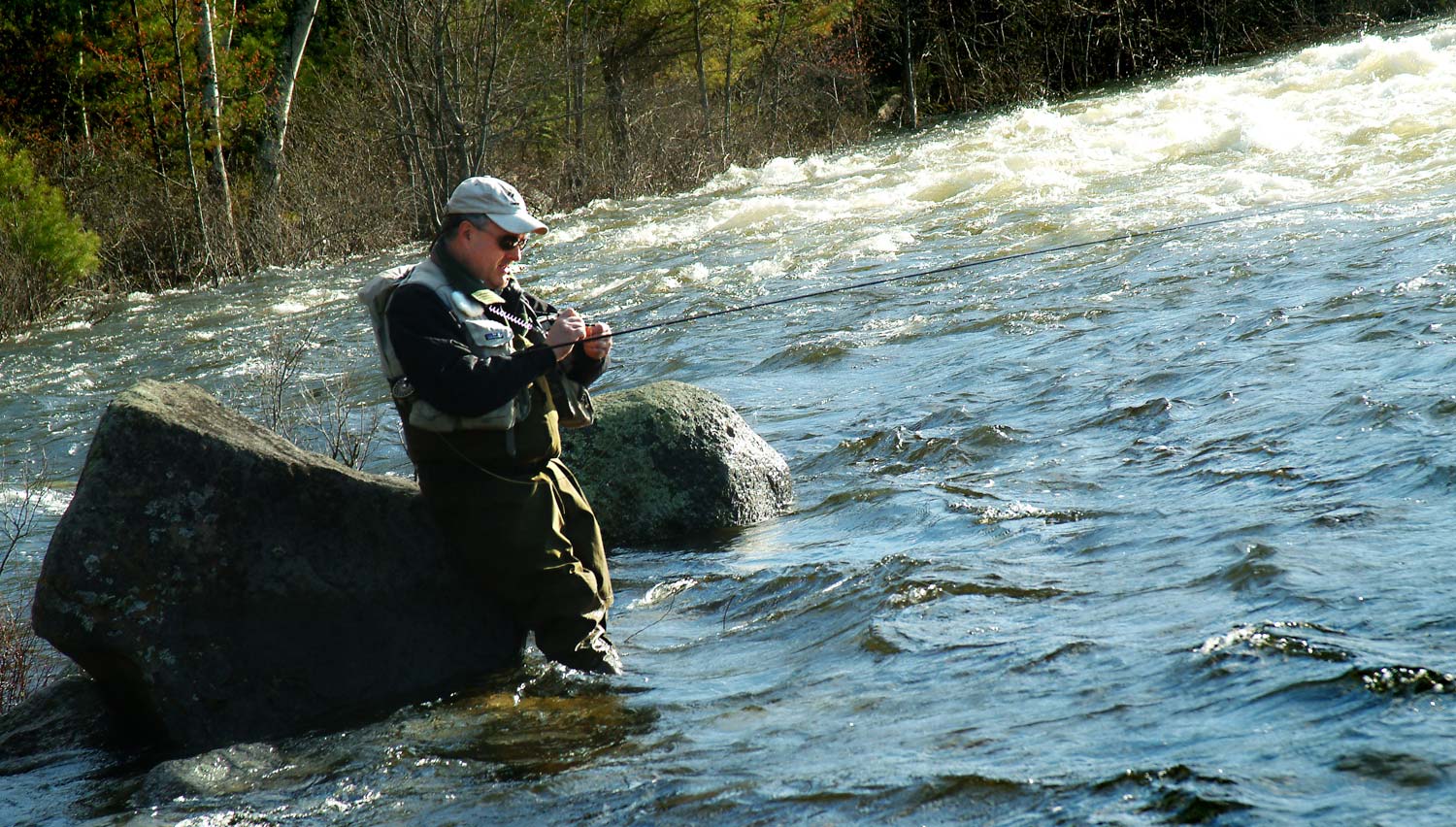
By Alice Tesar
The biggest mistake folks make during spring shoulder season in the Rocky Mountains is heading to the desert to mountain bike. I enjoy biking – just like any angler, it gets me to the fishing hole when my car is in the shop. With that said, fishing during runoff should be embraced and not run (or biked) from.
Not only are the rainbows making moves up your favorite tributaries, but larger trout are more willing to go for your fly, because they feel protected by the murky water. You may observe that the icy water from the snow melt has slowed the midge hatch from your winter fishing days. Even the BWO hatches, while present, aren’t magnificent here in NW CO.
I stick to two setups this time of year:
Read More »Choosing the Lens That’s Right You
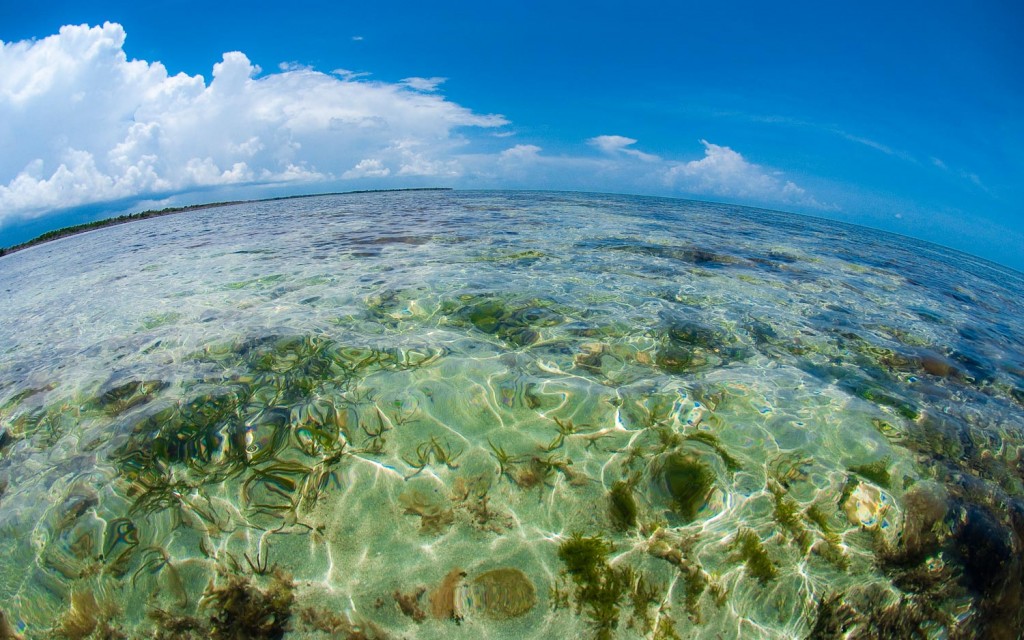
The most common camera question I get from my friends is “what lens should I buy.”
My usual answer is, “the one that costs the most.” It’s a joke, but there is some truth to it. Here are a few tips on choosing a good lens that’s in your budget.
First of all you do get what you pay for and it’s better to save up and buy a good lens than to buy one that you will not be satisfied with and need to replace. Be wary of third party manufacturers. If you have a Nikon camera you are likely better off with a Nikon lens. The term “prosumer” means amateur. These lenses have poor glass and good marketing.
Modern zoom lenses are very good but no one lens can do it all well. Choose a zoom with a modest range like 24-70 not 18-200. Lenses with fast apertures like 1.8 can be wonderful for freezing action but a zoom lens with that kind of aperture will be very expensive. If a fast aperture is important to you you might consider a prime lens like an 85mm f 1.8.
Special purpose lenses like fish eyes are fun but a fish eye is a one trick pony, even if it is a pretty cool trick. A lot of guys see a cool photo taken with a fish eye and run out and buy one. They shoot with it all the time for the first month, then it lives in the bag. If you’ve got the cash, why not, but if your on a budget put that money towards a better quality wide angle.
The other question I get all the time is, “What’s your go to lens for fishing?” Hands down it’s the 12-24 zoom. I like to be close to the action and a wide angle helps with that. It’s great the boat where you can’t
Read More »Trout Fishing The Low Warm Water of Summer
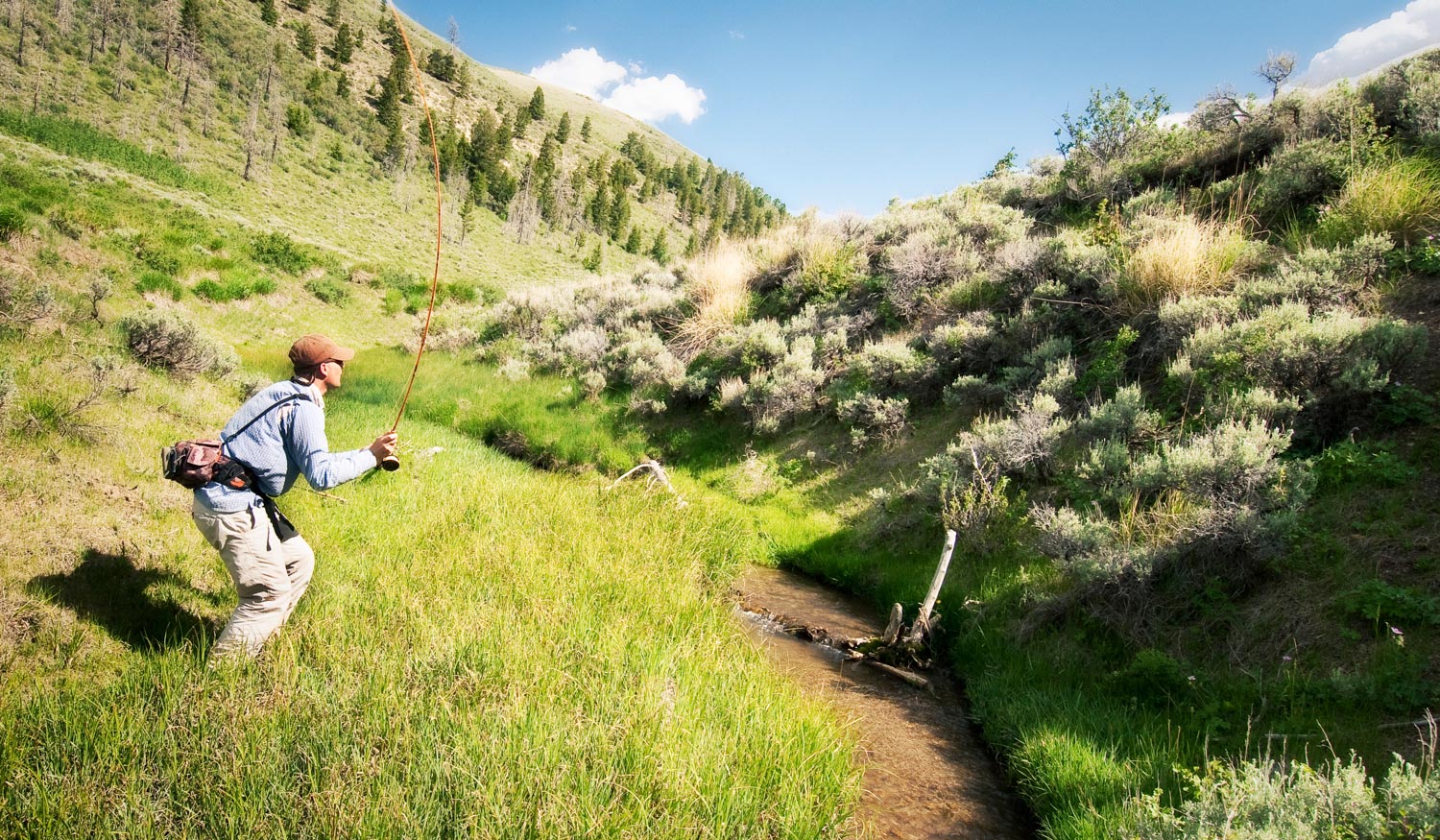
By Kevin Howell
Low, warm water is tough on trout and anglers.
Over the years I have been forced to fish for trout in some of the worst possible conditions, from high water, to days that the ice freezes instantly on your guides. The absolute hardest fishing of all though is the low hot water of late summer. Not only do the fish not want to feed but you have to worry about killing them when you hook them.
When water temperatures reach 70 degrees, it’s time to chase carp or bass. The main thing to remember is that you as an angler have an ethical responsibility when trout fishing in low, warm water. Use as large a tippet as you can, so you can land the fish as quickly as possible. If you are struggling to land a fish, break it off, so that you don’t stress it and kill it.
Spend as much time reviving the fish as you spent landing, if you spent 10 minutes (which is way too long) landing it, then spend 10 minutes reviving it. In low hot water you should not spend more than 1-2 minutes to land any fish, regardless of it size. The other big issue in the summer is taking pictures; in this low hot water do not take the fish out of the water. It is kind of like you running a half marathon and the very second you are done, someone holding your head under the water.
HERE ARE SOME OF MY BEST SUMMER TIPS:
Fish are reluctant to feed in times of warm water, or low water. They are just trying to survive so you need to draw a reaction or impulse strike. Your flies should have extra life added to them, rubber legs, soft hackles, Emu feather gills etc. The more annoying the motion of the fly the better your chance of getting a reaction strike.
Trout will not move a great distance to feed in low, warm water; your presentations will have to be almost in a direct line with the fish. This may require more sight fishing and/or multiple cast to the same area.
Be exceptionally careful of making waves in slow or shallow water. This will spook fish quicker than an errant cast.
Fish any decent
Read More »DIY Fly Line Loop with Step-by-Step Instructions
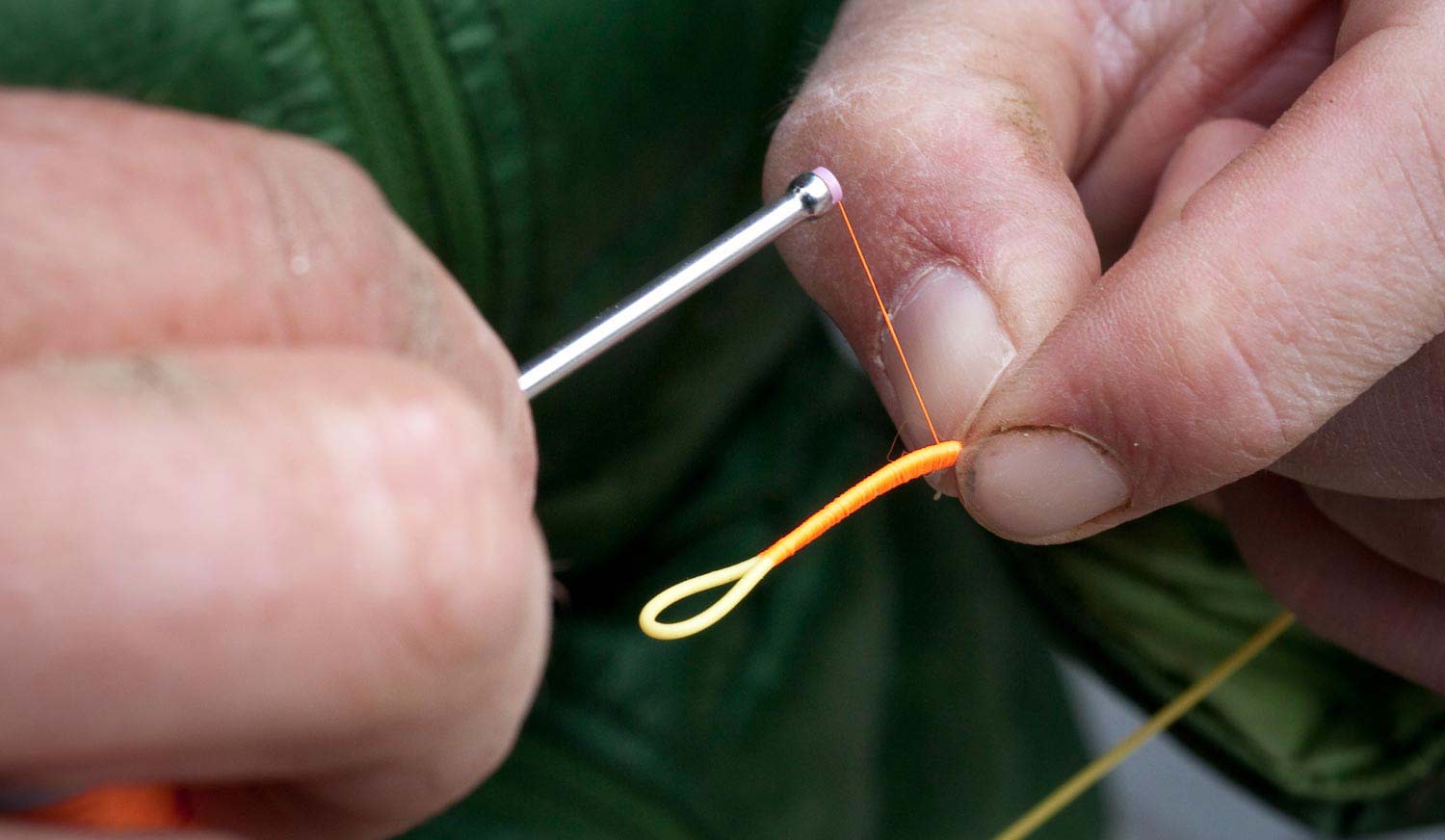
Most fly lines these days already come with welded loops at the ends for the easy attachment of backing and leaders. If you fish as much as I do though, eventually they get worn out and need to be replaced. Most anglers just use a standard albright knot or nail knot to fix this. It works perfectly fine, but I prefer instead to tie my own fly line loops with a fly tying bobbin and thread. Done correctly, it will provide a stronger connection to your leader than the manufacturers welded loops or knots you tie (this is important when fly fishing for big game species). The bright thread that you tie the loop with also works really well as a spotter. It comes in real handy when you’re fly fishing and you have conditions where it’s hard to keep track of your fly in the water. That bright spot on the end of your fly line provides a quick reference that your fly is a leaders length away. Below are step-by-step instructions for tying your own fly line loops.
Read More »Tell a Story

By Louis Cahill Here’s another tip on taking better photos on you next fishing trip. Everyone wants a hero shot with that monster fish but lots of people don’t think about all the details that go into a fishing trip when they are shooting pictures. These kind of detail shots tell the story of how you got to that fish. That’s what will really make your buddies who didn’t make the trip jealous. Take the time to get shots of the flies, the gear in the back of the truck, your buddies getting off the plane. When you get home, make a slide show and show it off. You will be surprised how many more invitations you will get for fishing trips. Louis Cahill Gink & Gasoline www.ginkandgasoline.com hookups@ginkandgasoline.com
Read More »Baby Tarpon, Little Monsters
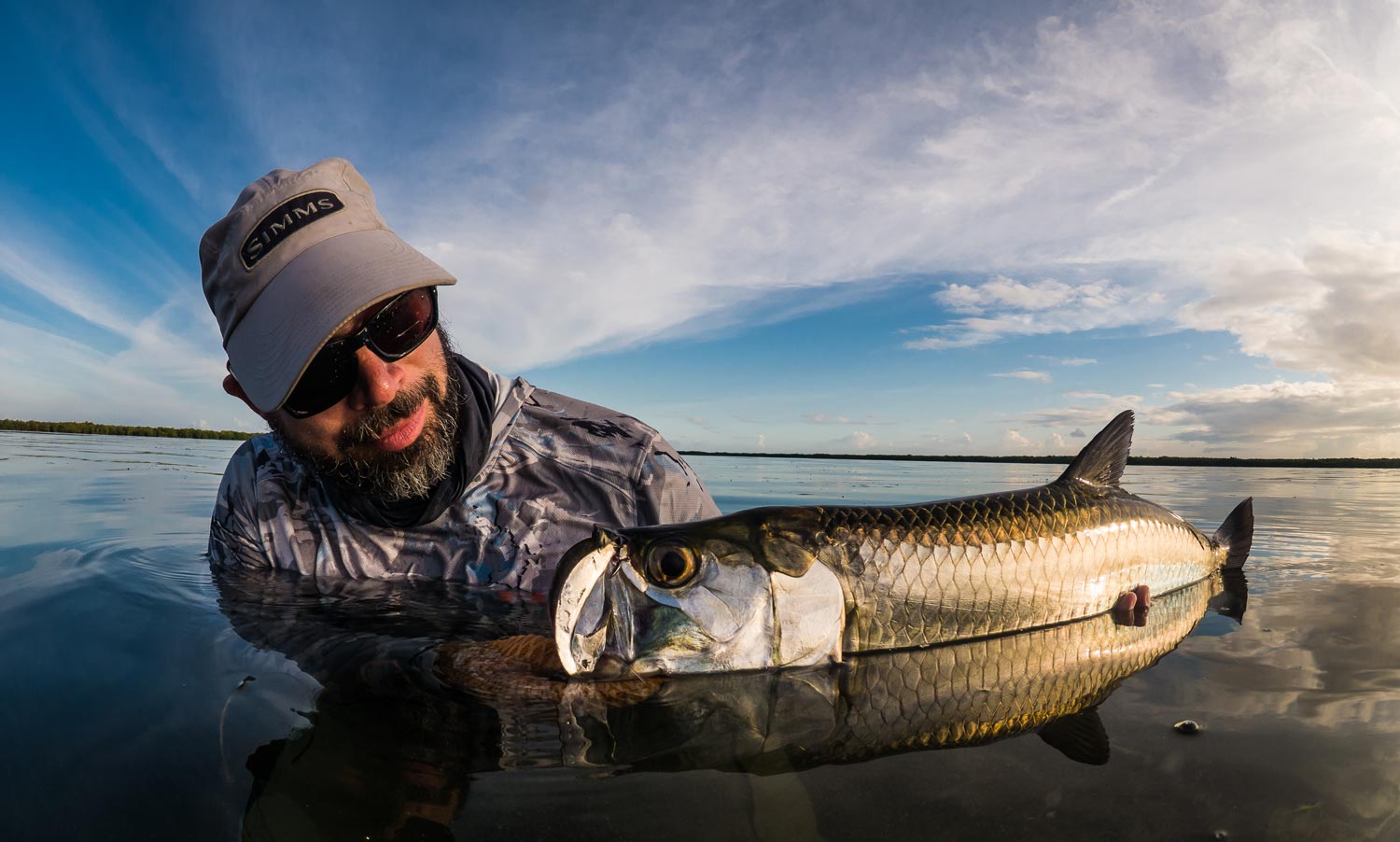
Tarpon are the king of Sport fish, even when they’re only ten pounds.
Standing on the bow of a flats boat at dawn, looking into a perfectly symmetrical sunrise reflecting on the glass-calm water, I can’t think of anywhere I’d rather be. When a pair of juvenile tarpon roll, they are so vivid that I’m momentarily surprised when their reflection does not appear in the sky. Rugged and chrome bright, they are perfect miniatures of their Goliath brethren. They may be only ten or twenty pounds but my heart beats just as quickly for them as it might for a world record fish.
When I first started tarpon fishing I had no interest in babies. I think that’s a common thing. I wanted to catch a ‘real tarpon’ and that meant a fish over a hundred pounds. Those monsters are truly amazing creatures. There’s no rush I know like hooking one. The moment when that first behemoth eats your fly and you bury the hook for all you’re worth and suddenly think,
“Oh shit! I’ve pissed it off. WTF am I going to do now?”
For years that was all of tarpon fishing to me, along with the brutal learning curve, the heartbreak of fickle conditions, the blistered hands and sore shoulders. Then my buddy Joel Dickey talked me into going out early one glass-calm morning to fish for baby tarpon. I had no idea how cool these little monsters are.
They are a total anomaly. On the one hand, they are tarpon in every way that matters. Stern and striking to look at. They catch more air than the Romanian gymnastic team. Their mouths are just as hard as the adults, making hook sets a privilege, not a right, and they fight like Hell’s Angels. I’ve broken 10 weights on them. They are tarpon to the bone.
On the other hand, they are completely different from those sulking bruisers you find migrating up the beach. They are aggressive. They like the fly stripped hard. They are competitive with each other, often racing to the fly. They move and hunt in packs like bonefish. They will sometimes explode violently on a fly dropped right on their nose. They are boney little badasses in every way and a blast to catch on a fly. There is a reason tarpon anglers say “baby tarpon” with a tone of reverence.
THERE ARE A COUPLE OF WAYS TO TARGET BABY TARPON.
Early on calm mornings they can be found
Read More »Patagonia Dream Stream: Video
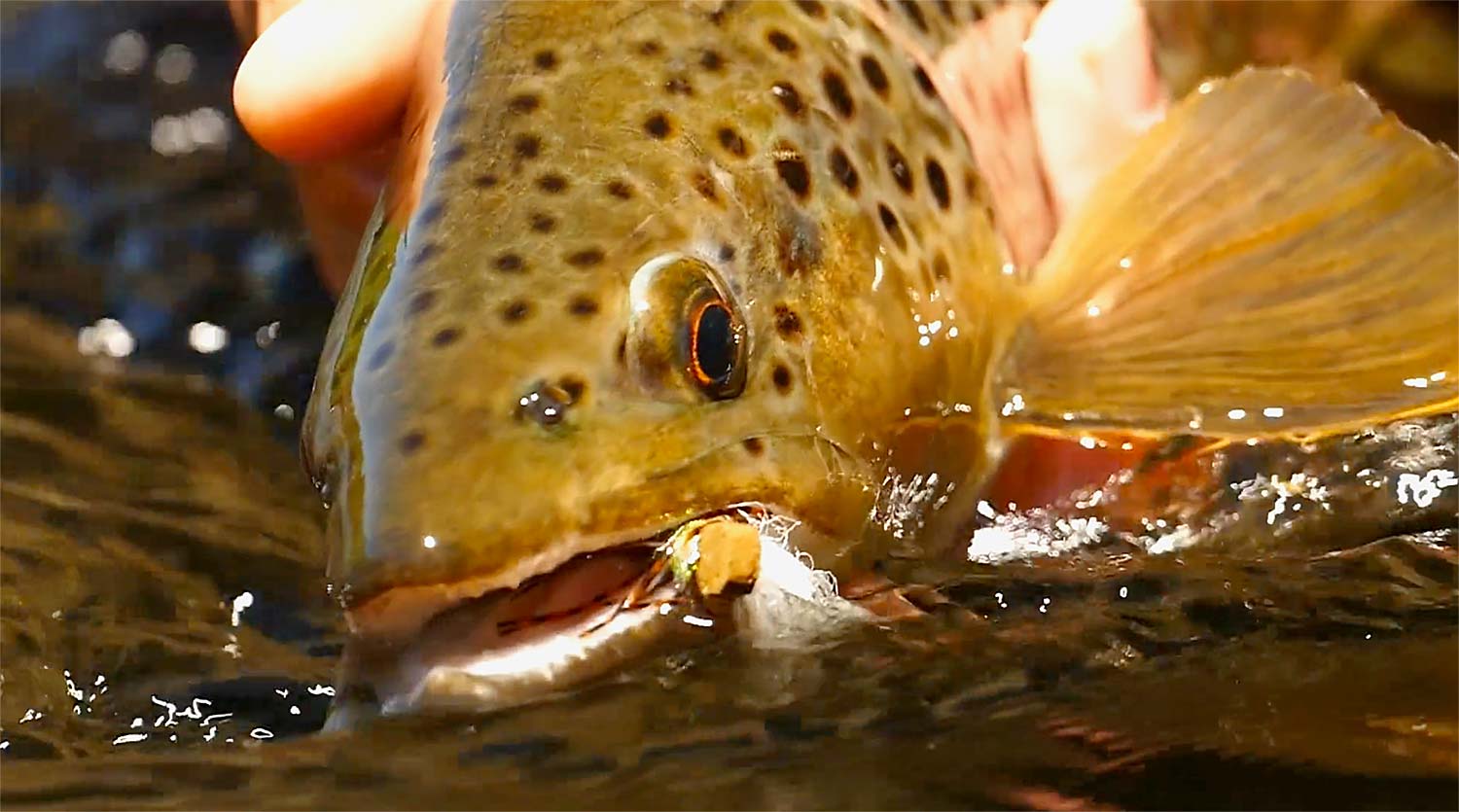
It’s time for a little walk-and-wade trout fishing in Argentine Patagonia.
My buddies at Andes Drifters have been killing it with their video content recently. Not to mention their fishing! This video is a great example. Beautiful footage and heart stopping action from one of the prettiest places on earth.
The river in this video is one I will be scouting in November, and I couldn’t be more excited. It’s just one of the cool, untapped resources Andes Drifters has at hand. It’s hard to believe that rivers like this go un-fished, anywhere in the world. If you have never experienced fly fishing in Argentina, put it on your to do list.
If you’s like to see it for yourself, we still have spots open for our Feb 2019 trip, where we fish for trout in Patagonia and golden dorado on the Upper Parana. It is absolutely a trip like no other. Shoot me an email at hookups@ginkandgasoline.com if you’re interested.
Read More »Cool Shots at Bonefish
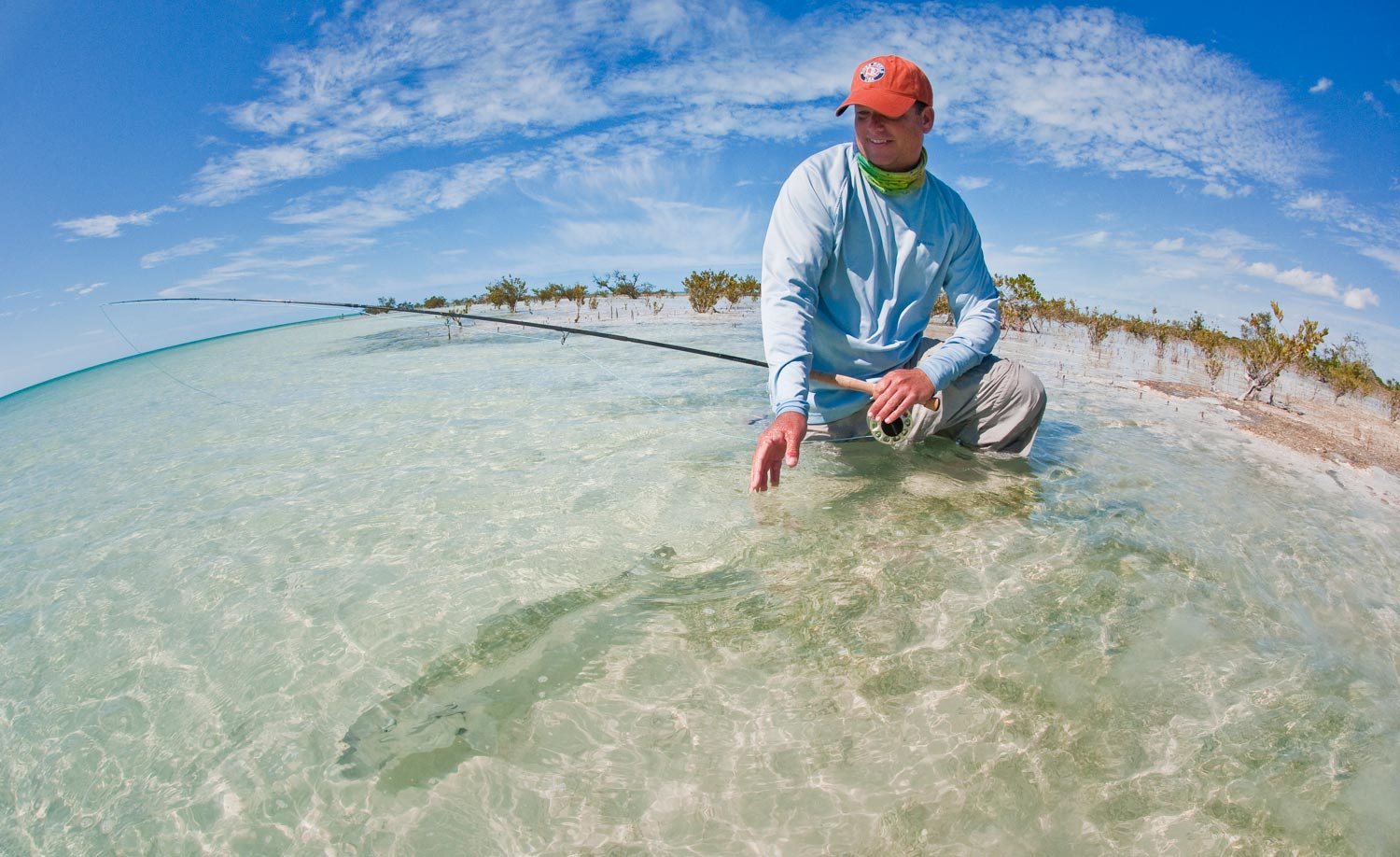
WHAT MAKES A REWARDING BONEFISH TRIP.
It’s hard to fly off to an exotic location for a week of fishing without having a goal, or at least some expectations. The first can be dangerous and the second disastrous. Still, one or the other is generally present on a fishing trip and the more the trip costs, the higher they usually are.
I’ll never forget my first bonefishing trip. My expectations were to actually see a bonefish and my goal was to not make a complete ass of myself when I did. (It’s good to have goals, right?) That trip did so much more than exceed my expectations. It was an awakening of sorts and the beginning of a life long obsession.
On subsequent trips I adjusted my goals. I wanted to catch a lot of bonefish. I wanted to catch big bonefish. I wanted to increase my hookup ratio. I wanted to catch bonefish on my own. I wanted to develop my own fly patterns. Eventually I just wanted quality fishing with good friends. One by one, all of those things went in the done column and I kept going bonefishing.
There’s not a thing on that list that I don’t still enjoy doing. Who doesn’t want to catch a lot of fish, or a big fish, or have a great day with a good friend. With the exception of the friend however, they all become less important with time. Most days all I really need is to stand on the bow and glide across a beautiful flat.
So what makes a day of bonefishing exceptional?
Read More »The Single-Hand Snap T Cast: Video
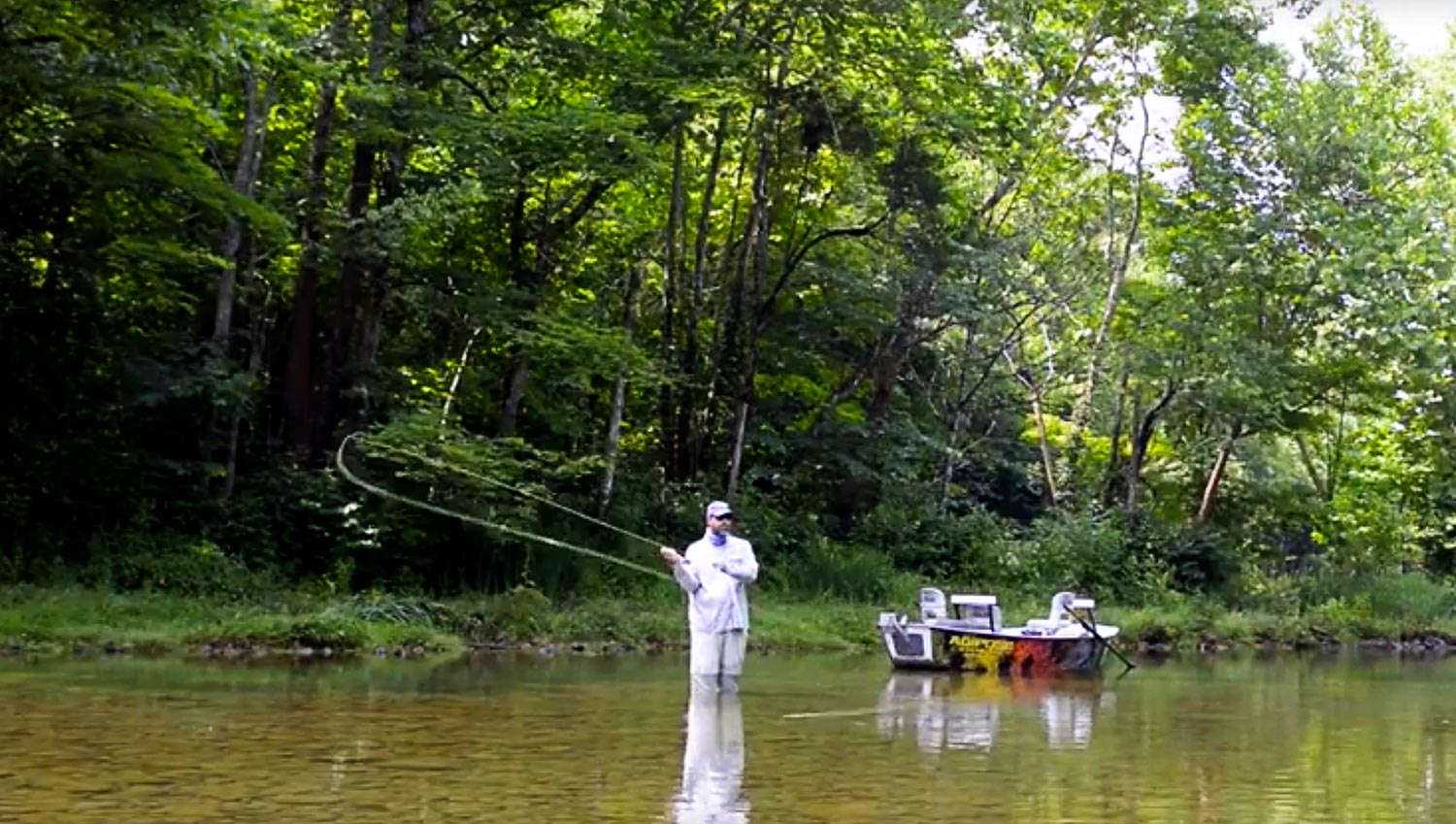
Here’s a powerful spey cast you can make with your single-hand fly rod.
The snap T is a familiar cast to any two-hand angler. It’s one of the essential spey casts, but its not just for the long rod. In fact, once you start using this cast with your single-hand rods, you’ll be shocked how often you use it.
The beautiful thing about the snap T is that it requires virtually no room for a backcast and is remarkably powerful. It will have you fishing water you’d never reach with a roll cast.
WATCH THIS VIDEO AND LEARN TO MAKE THE SNAP T CAST WITH A SINGLE-HAND FLY ROD.
Read More »